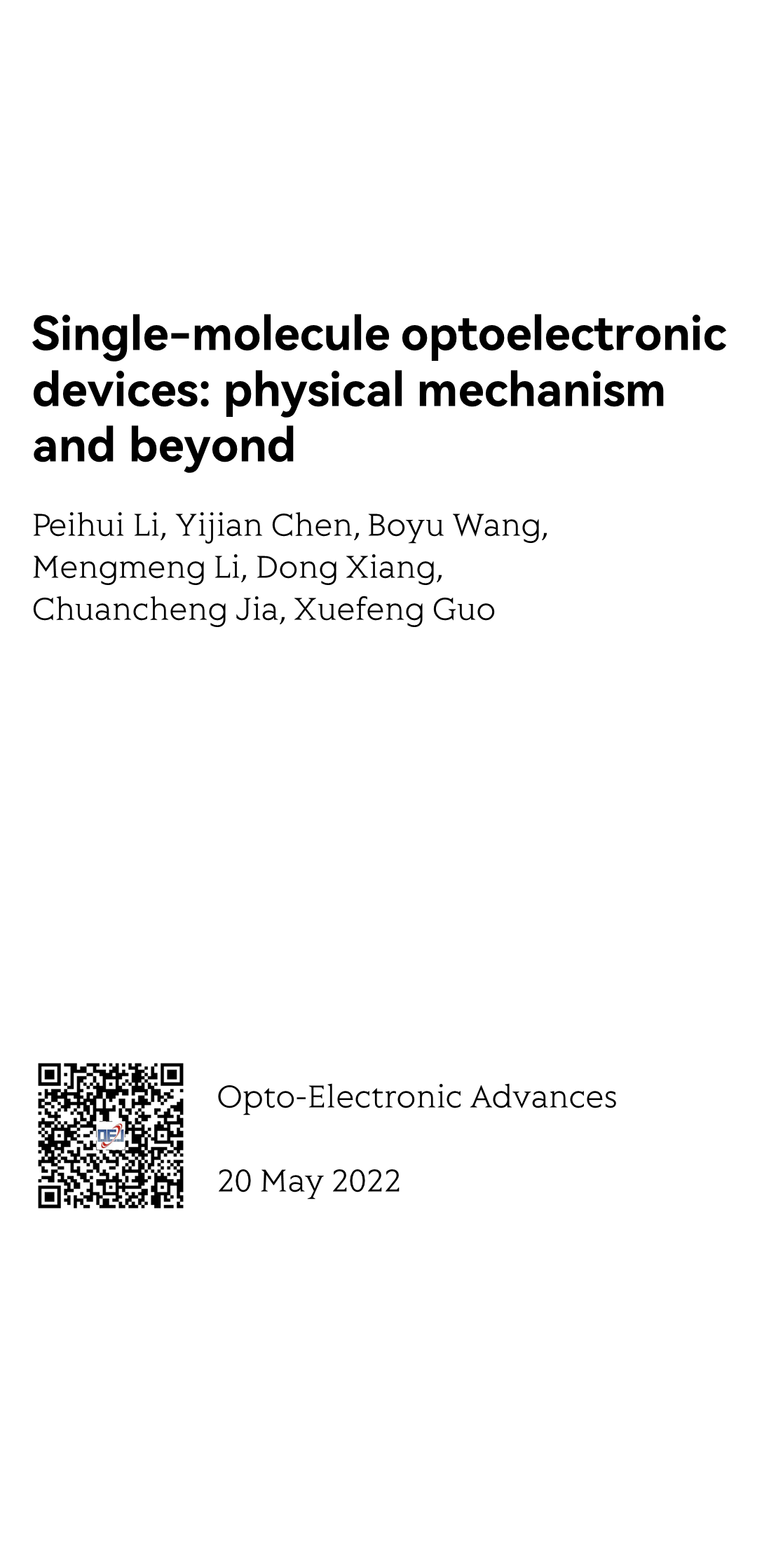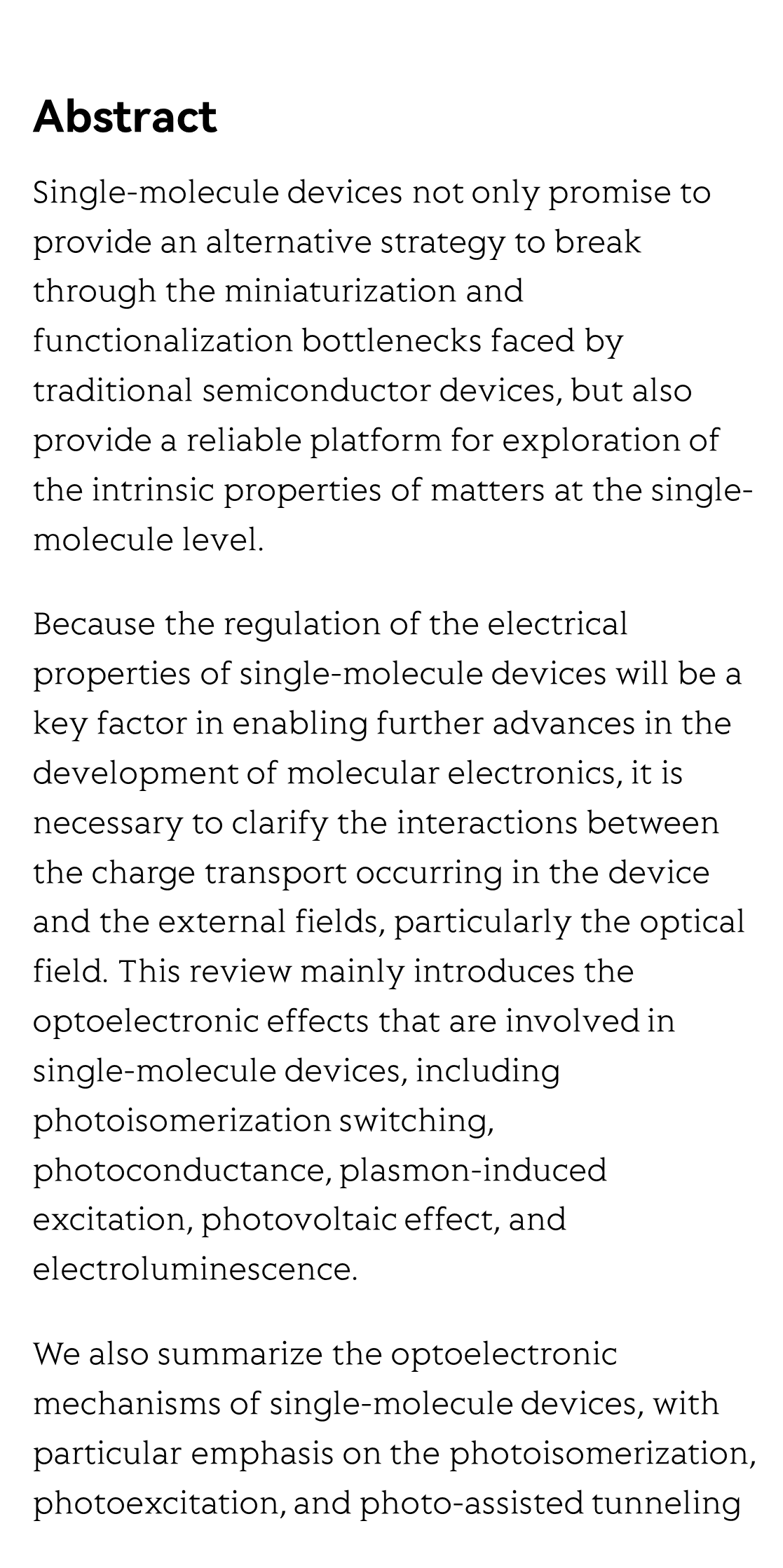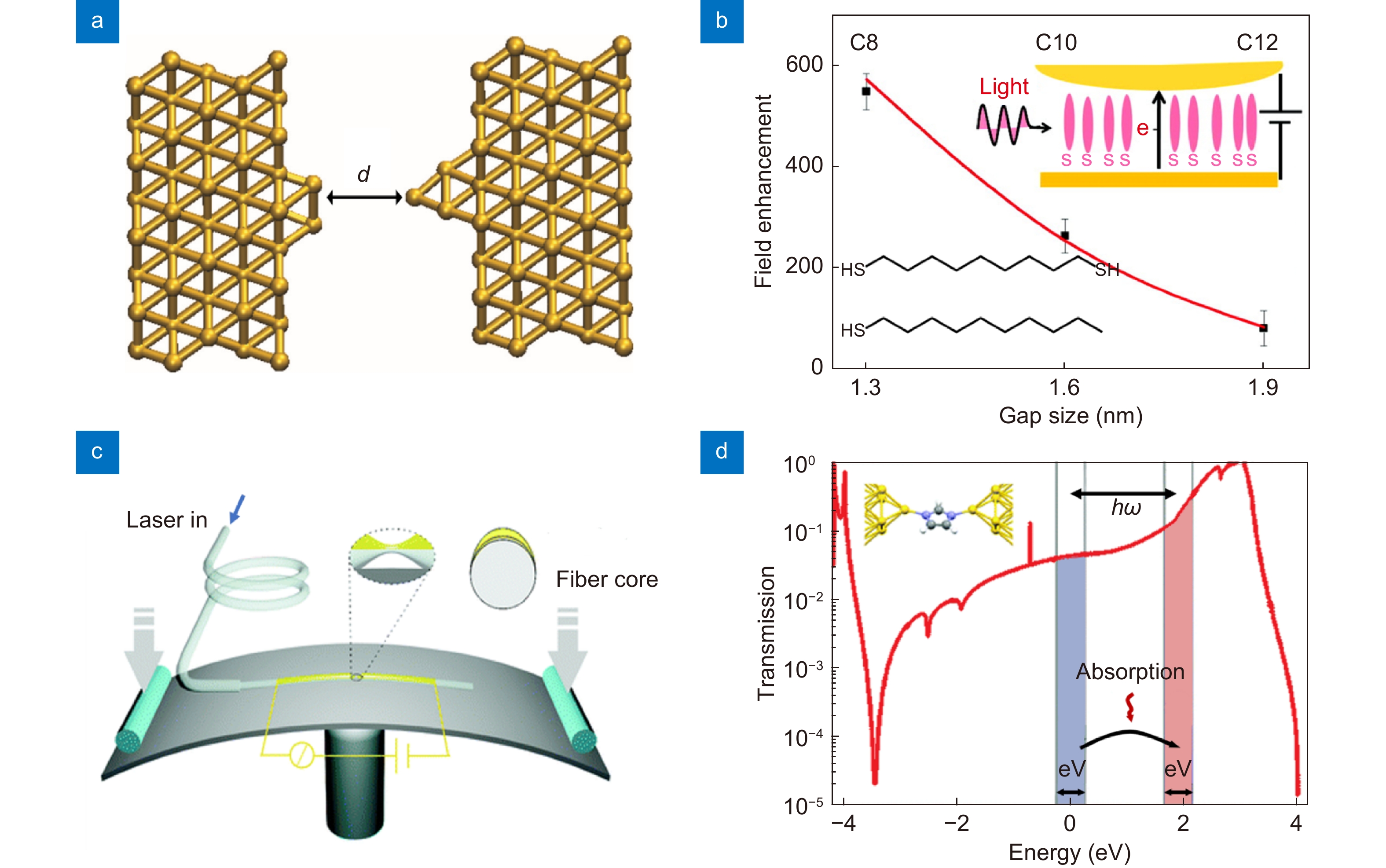(Peer-Reviewed) Single-molecule optoelectronic devices: physical mechanism and beyond
Peihui Li 李佩慧 ¹, Yijian Chen ¹, Boyu Wang 汪博宇 ¹, Mengmeng Li 李萌萌 ¹, Dong Xiang 向东 ¹, Chuancheng Jia 贾传成 ¹, Xuefeng Guo 郭雪峰 ¹ ²
¹ Center of Single-Molecule Sciences, Institute of Modern Optics, Tianjin Key Laboratory of Micro-scale Optical Information Science and Technology, Frontiers Science Center for New Organic Matter, College of Electronic Information and Optical Engineering, Nankai University, Tianjin 300350, China
中国 天津 南开大学电子信息与光学工程学院 现代光学研究所 天津市微尺度光学信息技术科学重点实验室 有机新物质创造前沿科学中心 单分子科学中心
² Beijing National Laboratory for Molecular Sciences, State Key Laboratory for Structural Chemistry of Unstable and Stable Species, College of Chemistry and Molecular Engineering, Peking University, Beijing 100871, China
中国 北京 北京大学化学与分子工程学院 分子科学国家实验室 分子动态与稳态结构国家重点实验室
Opto-Electronic Advances, 2022-05-20
Abstract
Single-molecule devices not only promise to provide an alternative strategy to break through the miniaturization and functionalization bottlenecks faced by traditional semiconductor devices, but also provide a reliable platform for exploration of the intrinsic properties of matters at the single-molecule level.
Because the regulation of the electrical properties of single-molecule devices will be a key factor in enabling further advances in the development of molecular electronics, it is necessary to clarify the interactions between the charge transport occurring in the device and the external fields, particularly the optical field. This review mainly introduces the optoelectronic effects that are involved in single-molecule devices, including photoisomerization switching, photoconductance, plasmon-induced excitation, photovoltaic effect, and electroluminescence.
We also summarize the optoelectronic mechanisms of single-molecule devices, with particular emphasis on the photoisomerization, photoexcitation, and photo-assisted tunneling processes. Finally, we focus the discussion on the opportunities and challenges arising in the single-molecule optoelectronics field and propose further possible breakthroughs.
Flicker minimization in power-saving displays enabled by measurement of difference in flexoelectric coefficients and displacement-current in positive dielectric anisotropy liquid crystals
Junho Jung, HaYoung Jung, GyuRi Choi, HanByeol Park, Sun-Mi Park, Ki-Sun Kwon, Heui-Seok Jin, Dong-Jin Lee, Hoon Jeong, JeongKi Park, Byeong Koo Kim, Seung Hee Lee, MinSu Kim
Opto-Electronic Advances
2025-09-25
Dual-frequency angular-multiplexed fringe projection profilometry with deep learning: breaking hardware limits for ultra-high-speed 3D imaging
Wenwu Chen, Yifan Liu, Shijie Feng, Wei Yin, Jiaming Qian, Yixuan Li, Hang Zhang, Maciej Trusiak, Malgorzata Kujawinska, Qian Chen, Chao Zuo
Opto-Electronic Advances
2025-09-25







